DALLAS — If you’ve ever come across an alligator gar, then you already know why the fish is referred to as a “river monster.” With a wide, shovel-shaped snout like an alligator and a mouthful of sharp teeth, it’s easy to be fearful of the large, powerful fish. However, the gentle giants get a bad rap, Texas Parks & Wildlife refers to the alligator gar as “sluggish and docile,” and there have been no confirmed attacks on people.
In the last decade more and more people have come to the Trinity River in Texas trying to catch a gator gar, and this year anglers have noticed the phenomenon has picked up even more interest. They attribute the hype to social media, especially new platforms like TikTok and Instagram Reels that make it easy to share videos and gain thousand of views in a short time.
“Before multi-species angling was a thing, people just concentrated on those that they were interested in, largemouth bass and bluegill and crappie. So [alligator gar] wasn't something that was of interest for people to catch,’ said TPWD Inland Fisheries biologist Dan Daugherty. "But nowadays, people are more interested in catching different species of fish and have a bucket list. And the popularity of the social media, "River Monsters" and Megafish, and all the shows that have highlighted these species that typically weren’t your typical sport fishes, has really increased the interest in the species."
So what is it about the alligator gar specifically that attracts an annual average of about 100,000 anglers to try and reel in the prehistoric-looking fish, often referred to as the “living fossil?” It’s a fish that can grow up to eight feet long and weigh more than 300 pounds.
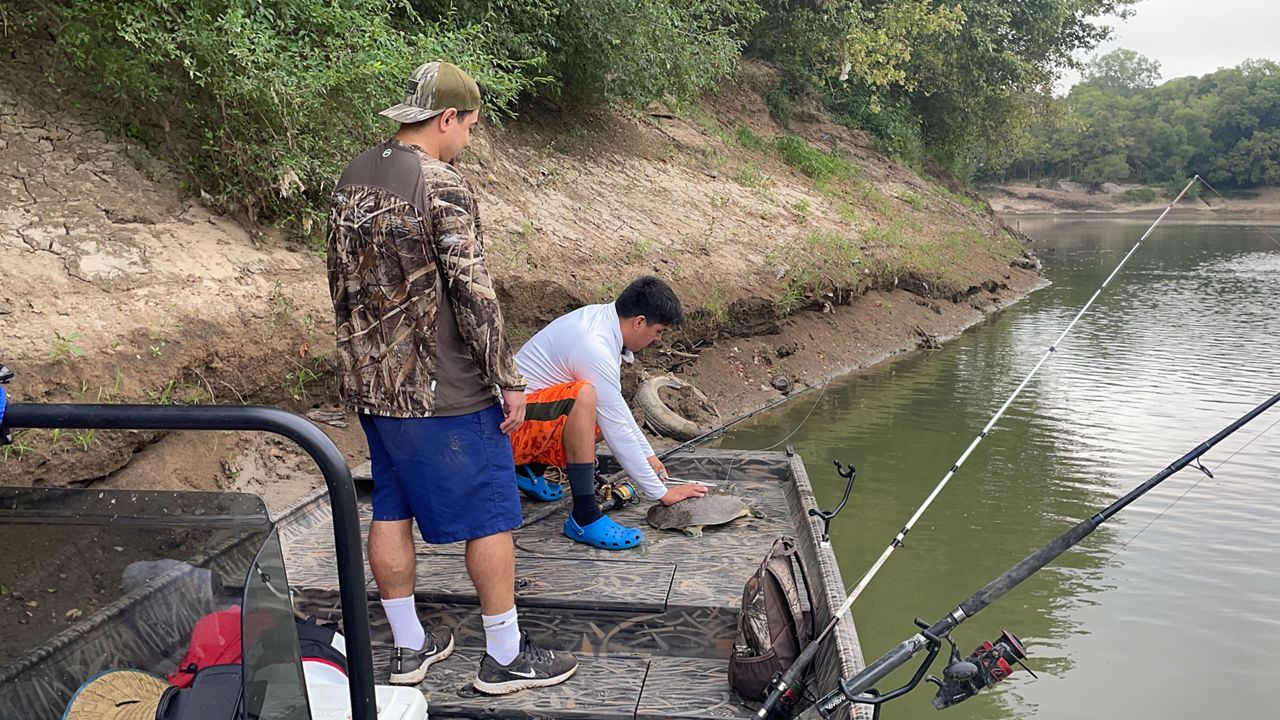
“People want to catch the biggest fish. The bigger, the better. And obviously, the alligator gar is the second biggest freshwater fish in North America,” said Dallas angler and Trinity River Gar Fishing guide Carlos Guerrero.
Guerrero says ever since watching an episode of "River Monsters" with Jeremy Wade back in 2009, he’s been fascinated with catching “gator gar” and has caught over a hundred since. He regularly takes people out on his jet boat along the Trinity River, serving as a guide for folks gunning for the largest fish in Texas.
"I had to come by myself and basically teach myself how to catch these gator gar. And it took a while, it took a lot of trial and error, you know, what things to use — what hooks, what line, what reels. I broke a lot of cheap reels from Walmart - I mean, I didn't know. So I did break a lot of reels and I did lose a lot of fish because they’d bite into the line, too. I didn’t use a steel leader. So it did take me a while, but eventually I was able to do it,” Guerrero said.
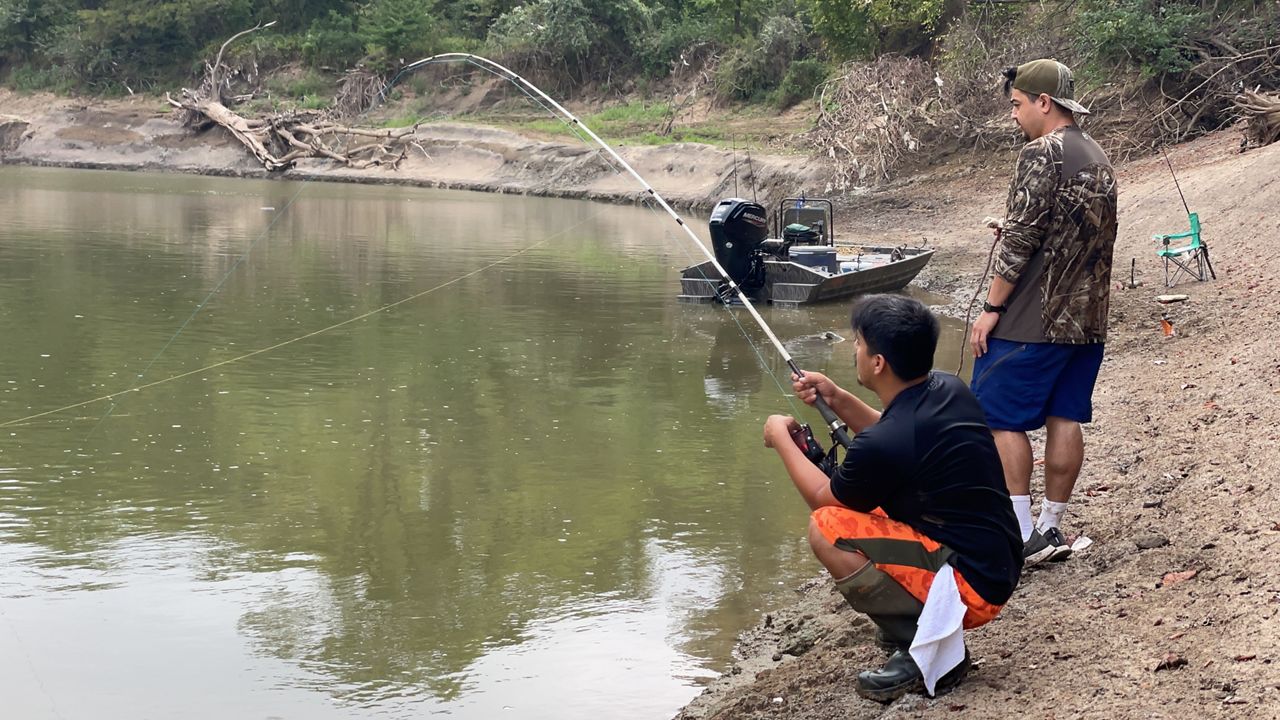
Guerrero believes as long as people respect the gator gar, there won’t be a concern about too much of a good thing. But he does have concerns about people handling the fish who don’t give it the respect he says it deserves.
“Back then, a while back, there wasn’t Facebook or anything, so you couldn’t share it so quickly. Now, you could snap a picture and share it on social media real quick, and people are amazed by the fish. Social media is just bringing a lot of attention to this alligator gar. And it sucks for the gator gar because — a lot of us, we do. We handle the fish right — but there's just a couple of them that don't and what I'm thinking is it will affect the population,” Guerrero said. “Treat the fish with respect. Take quick pictures of them and enjoy the fish as little as possible. And then just put them on the water, put them back in the water."
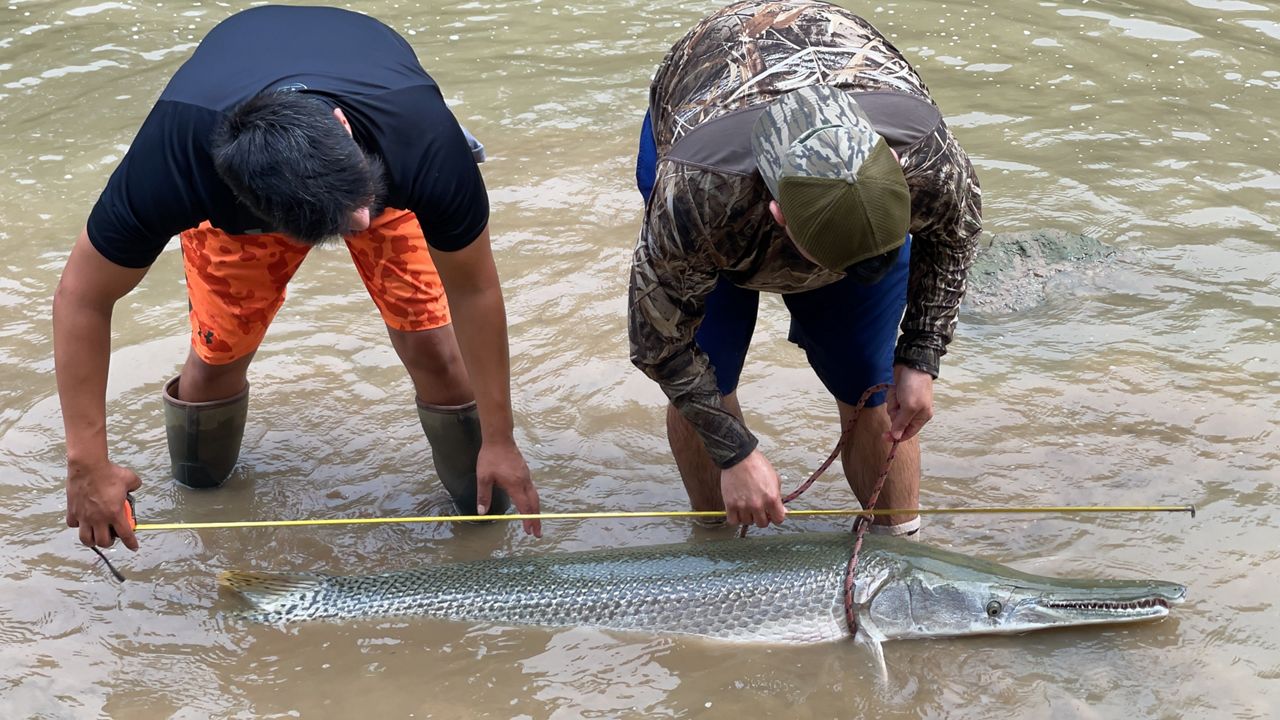
Daugherty says it’s the goal of TPWD to maintain the population of Texas’ largest freshwater fish, and restrictions are in place to make sure overfishing and over harvesting don’t happen. In order for the population to remain healthy, gator gar can only sustain harvest rates of about 5% each year. Anything more will lead to a decline of the biggest and oldest fish, leaving only the young, smaller gar.
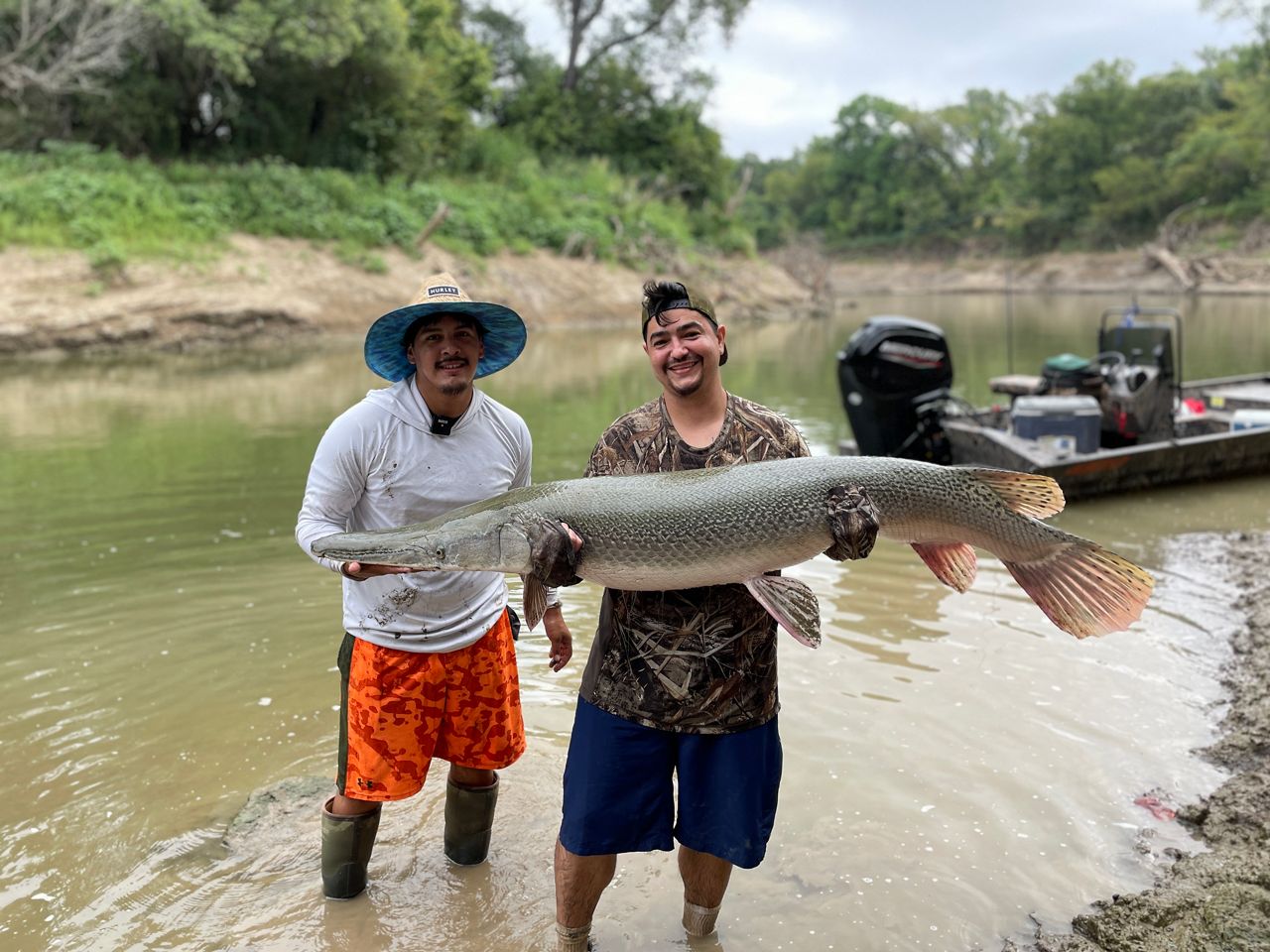
“They've been around, the fossil record of ancestral gars have been around for 200-plus million years. They are native to Texas, they're our largest freshwater fish. And so we definitely have an interest in and responsibility to conserve the fishery, as well as the species,” Daugherty said.
From Sept. 1-30, licensed anglers can enter the TPWD drawing to harvest one four-foot or more alligator gar from the Trinity River. The section of the Trinity River from the I-30 bridge in Dallas, downstream to the I-10 bridge in Chambers County is one of the most popular places to catch a large alligator gar.
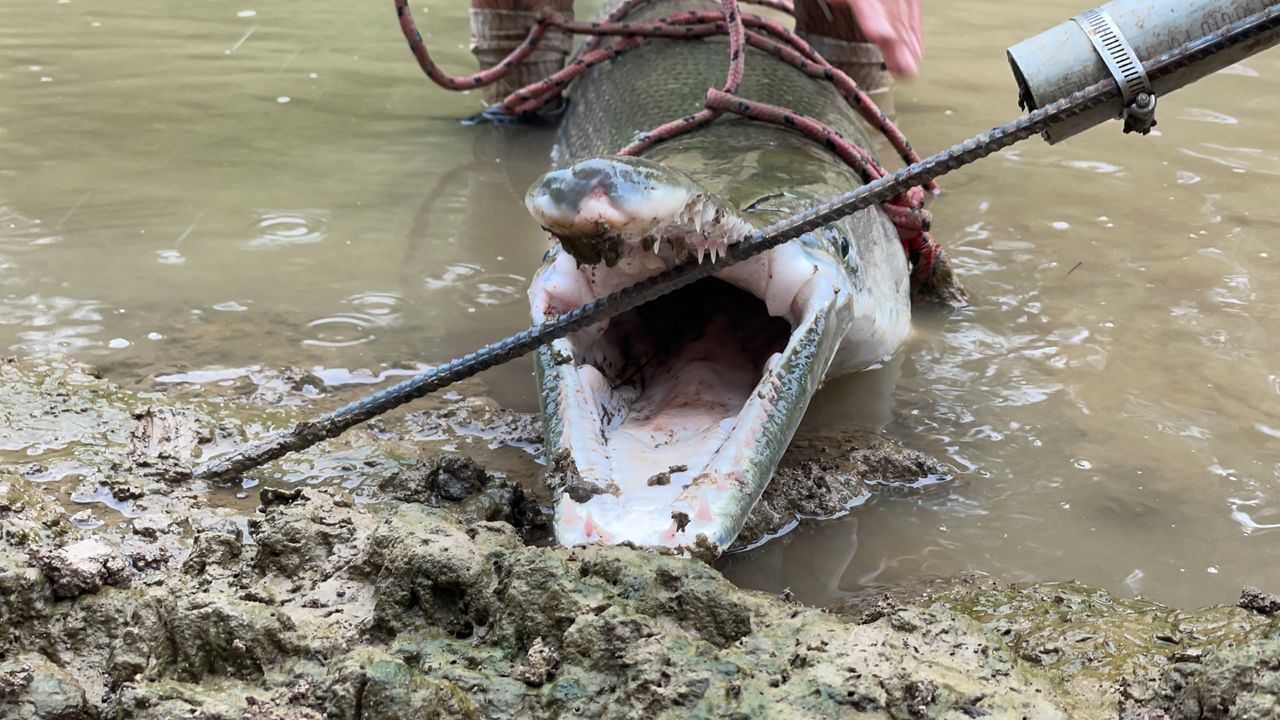
“This segment of the Trinity River has become one of the most popular destinations in the world to catch a large alligator gar, but concerns have been raised about the potential for overharvest and its risks to fishing quality,” said TPWD Inland Fisheries Director Craig Bonds. “With this drawing system, we are able to give 150 anglers the opportunity to harvest the fish of a lifetime while also meeting our management goal to conserve this unique resource for current and future generations of anglers.”
In addition, all alligator gar harvested, including those harvested using a harvest authorization, from public freshwater and saltwater waterbodies (other than Falcon International Reservoir) must be reported to the Texas Parks and Wildlife Department within 24 hours of harvest on the My Texas Hunt Harvest mobile app or online.
“In order for us to manage our alligator gar populations among growing angler interest, it is crucial to know how many are being harvested in Texas,” Bonds said. “By gathering data on alligator gar harvest through the My Texas Hunt Harvest app and online, our fisheries management team gains a better understanding of this species’ distribution, sizes, and numbers and can use that information to help manage for quality fishing in the future.”
After initially catching a Texas Spiny Softshell turtle, Guerrero was able to reel in a six-foot alligator gar the morning Spectrum News 1 went out with him. Reeling him in, along with the help of his buddy Jerry Beltran, took about 10 minutes. Guerrero and Beltran say it’s a feeling that doesn’t get old and it’s a hobby they plan to continue for many years to come.
"It’s still special. I still get happy because I'm like ‘Oh, it’s an alligator gar.’ To me, I get excited. Why? I don’t know. I mean, I’ve caught of a lot of them. But these fish, once you see them, they're very special fish. They're very rare too, you know, they’re weird looking but pretty cool,” Guerrero said.



